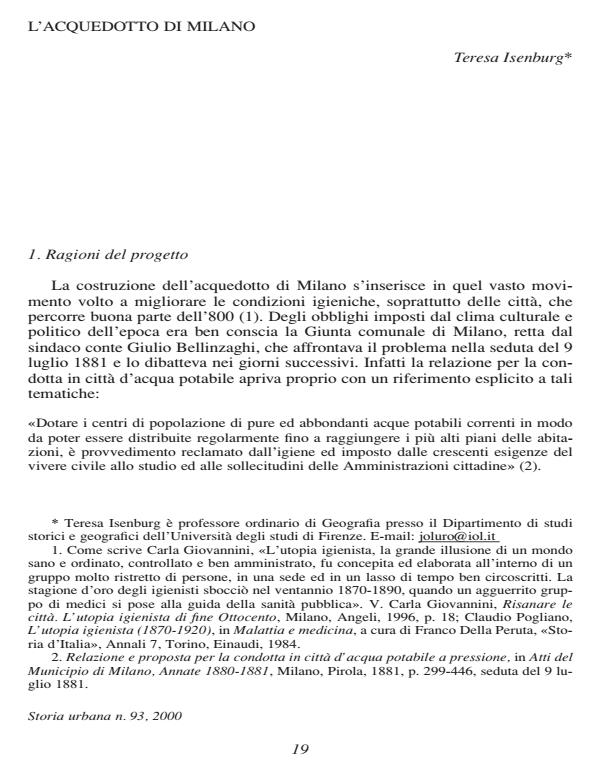L'acquedotto di Milano
Journal title STORIA URBANA
Author/s Teresa Isenburg
Publishing Year 1 Issue 2000/93
Language Italian Pages 11 P. File size 53 KB
DOI
DOI is like a bar code for intellectual property: to have more infomation
click here
Below, you can see the article first page
If you want to buy this article in PDF format, you can do it, following the instructions to buy download credits

FrancoAngeli is member of Publishers International Linking Association, Inc (PILA), a not-for-profit association which run the CrossRef service enabling links to and from online scholarly content.
For about twenty years in the middle of the nineteenth century, the Milan Town Council discussed the problem of providing the rapidly expanding town with abundant and good quality drinking water. Various solutions were foreseen, all based on the assumption that river water could be used, but these projects fell through due to technical difficulties and the opposition of consumers. In 1888, water began to be drawn from the urban subsoil. This was to be a temporary option, but in fact, it became a definitive solution. Up to the beginning of this century, the Town Council ran this service as economically as possible, but recently, regulations have been passed requiring an organization based on the criteria of cost-effectiveness and efficiency.
Teresa Isenburg, L'acquedotto di Milano in "STORIA URBANA " 93/2000, pp , DOI: